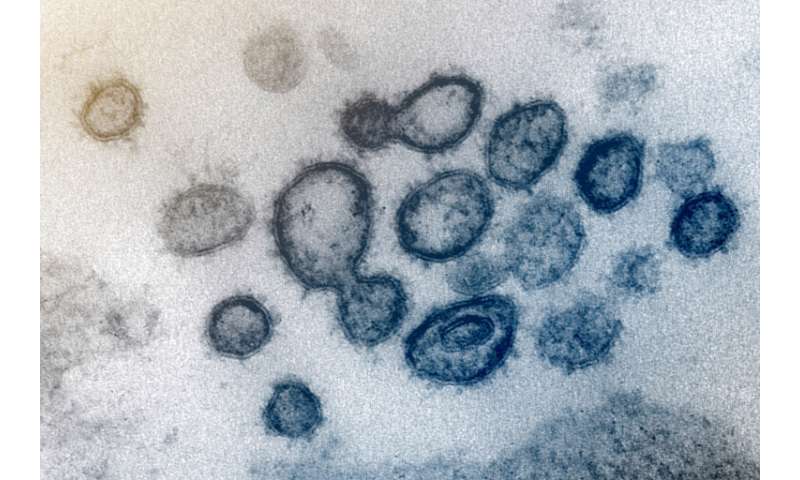Samples from those who had COVID-19 could illuminate true infection rate, lethality, vaccines

Researchers in the Blavatnik Institute at Harvard Medical School (HMS) and at Brigham and Women’s Hospital are adapting an antibody-detection tool to study the aftermath of infections by the novel coronavirus that is causing the current global pandemic.
The tool, called VirScan, detects antibodies in people’s blood that indicate active and past infections by viruses and bacteria. It was developed in 2015 by Stephen Elledge, the Gregor Mendel Professor of Genetics and of Medicine at HMS and Brigham and Women’s, and two Ph.D. candidates in the lab, George Xu and Tomasz Kula.
Because it takes five to 10 days for a person to develop antibodies, Elledge emphasized that VirScan would not be used to provide real-time diagnoses of infection with SARS-CoV-2, the virus that causes COVID-19.
Rather, the goal is to analyze blood samples from people who recover from infection to learn about how the virus affects the immune system and the epidemiology of the disease.
Once underway, the effort will join others around the world attempting to study post-infection blood samples. The results could lead to better estimates of true infection and lethality rates by capturing cases that may have gone undetected and could inform the development of vaccines. They could also reveal new insights into the fundamentals of human immunity.
“The situation right now is extremely difficult, but it’s great to be in a position to apply all these new methods to an important human health problem,” said Elledge.
How does VirScan work? How is it different from diagnostic tests?
From a single drop of blood, VirScan tests for antibodies against more than 1,000 different strains of viruses and bacteria that may have infected a person, whether around the time of testing or decades earlier. This differs from typical blood tests known as ELISA assays, which look for one pathogen at a time.
It also differs from the tests currently used to diagnose COVID-19. Those tests rely on mucus swabs from the nose and throat and look for nucleic acids that signal that the SARS-CoV-2 virus is contained in the sample.
“The CDC and other testing facilities are looking for the presence of the virus, which is critical,” said Elledge. “Our assay can detect whether someone’s immune system has engaged the virus. We can tell when someone has harbored the virus but doesn’t have it anymore.”
To create VirScan, Elledge, Kula, and Xu built a library of epitopes: short protein fragments derived from the surfaces of viruses. If a person has encountered a particular viral strain, their immune system has generated antibodies against it. Those antibodies will then recognize the epitope in the VirScan library and bind to it, giving a positive result.
Elledge’s lab included epitopes from several different coronaviruses in the original VirScan collection. The team is now adding epitopes from the new coronavirus as well as all other known coronaviruses not already included.
Can VirScan be used to test whether people currently have COVID-19?
For several reasons, including the fact that it takes at least a week to generate results, VirScan can’t be used as a real-time diagnostic test.
“It’s not feasible as a point-of-care test,” said Elledge. However, he added that his team might be able to use the information gained to generate a faster version of VirScan.
When the project gets up and running, it will be critical to ensure that blood samples are taken only from people who have recovered fully from SARS-CoV-2 infections, so that vials do not contain active coronavirus particles when they enter the lab.
“We don’t want to infect our researchers,” said Elledge.
How can the work improve estimates of infection and fatality rates?
So far, limited testing has meant that an unknown number of people in the U.S. and beyond have been infected with SARS-CoV-2 but remain uncounted. Some may not have had symptoms. Some symptoms may have been attributed to other causes. This not only leaves individuals wondering about their infection and immunity status but also obscures the true infection rate across the population. And without knowing how many people have been infected, it’s impossible to calculate the fatality rate—how likely the new coronavirus is to kill a person it infects.
Running VirScan analyses on blood, or serum, from a sizeable segment of the population can provide “a reliable estimate” of how many people were infected in a given geographic area, said Elledge. Cross-referenced with medical records of those who tested positive and died, that information can illuminate the virus’s true lethality rate.
“Because right now they say, ‘this many people came in and tested positive,” and ‘this many died,” but if there are a lot of people who are not sick enough to go to the hospital and who don’t get tested, it makes the virus look more lethal than it might be,” said Elledge.
How can VirScan inform vaccine development?
VirScan promises to help Elledge and colleagues identify which parts of the virus the immune system responds to.
Recent work from his group suggests that people all over world infected with a particular virus make antibodies against the same proteins—”even the same amino acids”—on that virus, Elledge said.
That’s surprising, considering how many epitopes viruses have and how many antibodies are in the body’s arsenal, said Elledge. The findings led him to suspect that some epitopes are, in effect, decoys, and therefore, that not all antibodies have the desired neutralizing effect.
“The immune system may be sending out all these antibodies like shooting a shotgun and hoping some of the spray will hit the target, neutralizing some critical part of the virus,” he said.
In principle, said Elledge, VirScan could indicate which epitopes are useful targets against the new coronavirus and which are just noise. Then researchers could eliminate the useless ones from vaccines they’re developing.
How else is the lab working to assist vaccine efforts?
Source: Read Full Article
